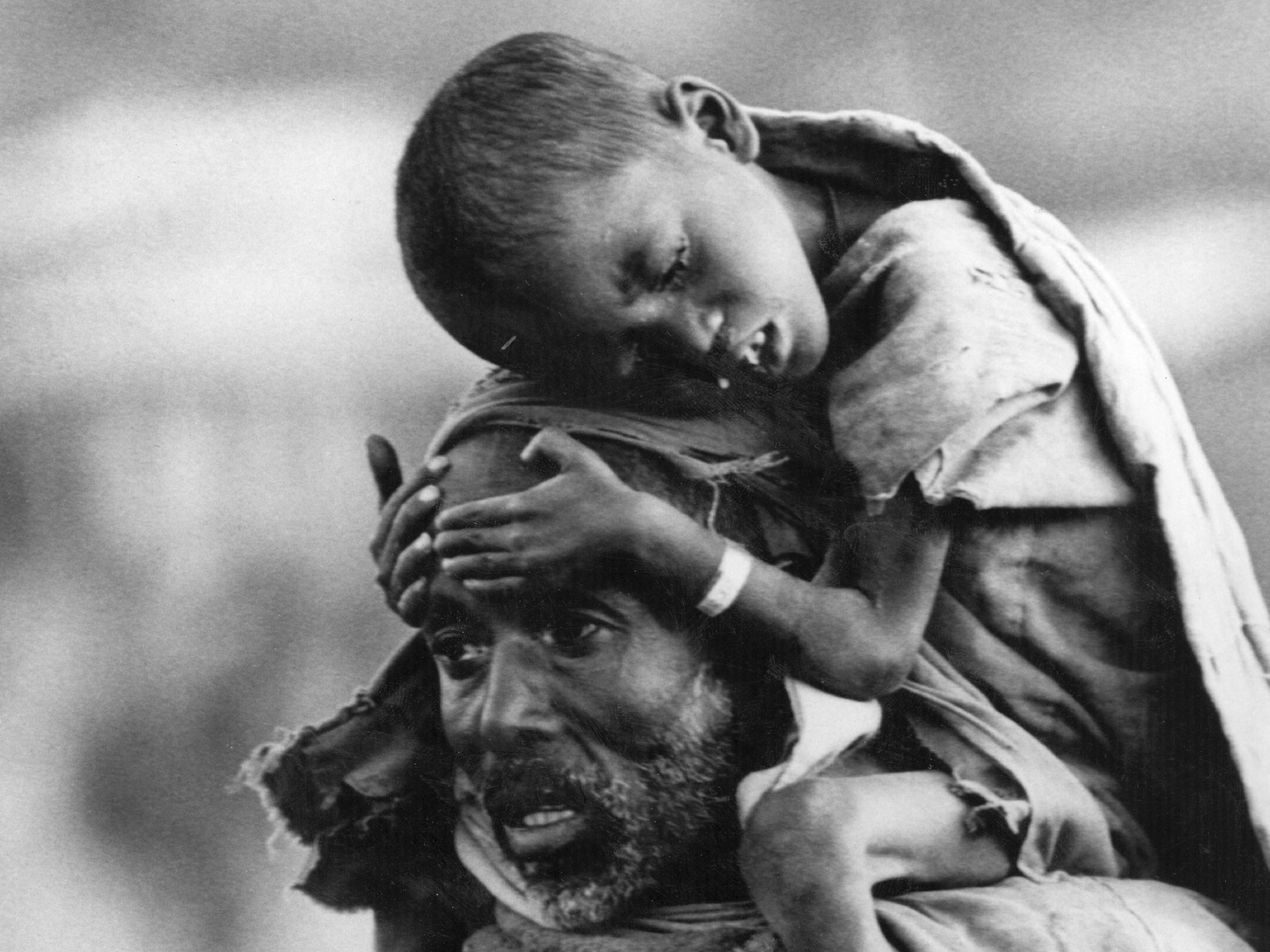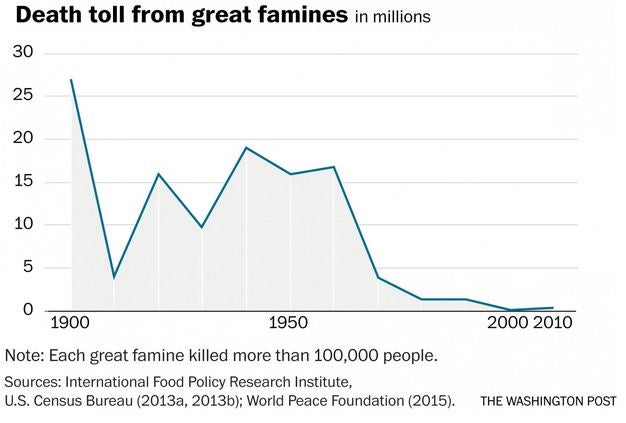The world's hunger problems, in four charts
Millions are still dying from malnutrition every year, but famine is generally on the decline

Around the world, a lack of food is a debilitating, often fatal problem. Nearly one in nine people worldwide are chronically undernourished, and 3.1 million children die of malnutrition each year.
As terrible as that problem is, however, there are signs that things may be getting better.

On Monday, the International Food Policy Research Institute, Welthungerhilfe and Concern Worldwide released their annual Global Hunger Index (GHI), an overview of the problem of hunger in developing countries. The GHI uses four indicators — the percentage of the population that is undernourished, the percentage of children who suffer from wasting, the percentage of children who suffer from stunting and the percentage of children who die below age 5 — to assign a score to each country for which it can get data. The scores correspondent with ratings, which range from "low" to "extremely alarming."

There is plenty of bad news in the 2015 GHI. Forty-four countries have a "serious" level of hunger, while eight have an "alarming" level. In the Central African Republic, the country with the highest GHI, almost 48 percent of the population is undernourished and 40 percent of children under 5 have stunted growth.
However, despite these problems, there are some positive signs. Although the GHI doesn't have data for all countries, what data it does have seems to show a positive shift. Overall, the level of hunger in developing countries appears to have fallen by 27 percent in the past 15 years, and the level of hunger has been halved in 17 countries. In fact, only one country — Kuwait — has seen its GHI score rise since 2000, though the rise was relatively small and Kuwait's overall level of hunger is low.

Looking back further, the data is even more positive. There were 16 countries with "extremely alarming" GHI scores in 1990. In 2015, there were none.
Perhaps more remarkably, the era of "great famines" appears to be over. Over the past century, famines that kill more than 100,000 people have become rarer and rarer, to the point where they are almost obsolete. In the 21st century, 600,000 people have been killed by great famines — a huge number but nowhere near the 27 million who died from famines between 1900 and 1909. Famines like those seen in China from 1958 to 1962 or in Ethiopia from 1983 to 1985 appear to be, for the most part, a thing of the past.
These developments give experts reason for hope.

“The age of calamitous famines is over. Throughout history, these famines have decimated entire swaths of the global population and there was little people could do to avert the crisis," Alex de Waal, executive director of the World Peace Foundation and research professor at Tufts University, said in a statement. "Today, however, global hunger is increasingly a result of the decisions we make."
Copyright Washington Post
Join our commenting forum
Join thought-provoking conversations, follow other Independent readers and see their replies
Comments
Bookmark popover
Removed from bookmarks